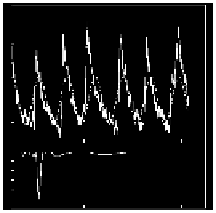Biology Reference
In-Depth Information
I am turned into a sort of machine for observing facts and grinding
out conclusions.
Charles Darwin (1809-1882)
In single-celled organisms, all life functions, such as
metabolism, response to stimuli, and reproduction, are of
necessity performed by the cell itself. In multicellular
organisms, groups of cells become specialized to perform
particular functions. The proper functioning of
multicellular organisms, therefore, requires efficient
mechanisms for cell-to-cell communication for controlling
and coordinating the actions of disparate and often
distant cell types. In mammals, communication
functions are performed by the nervous and endocrine
systems.
Chapter 9
ENDOCRINOLOGY
AND HORMONE
PULSATILITY
The endocrine system controls important physiological
processes, including growth, metabolism, reproduction,
and development, by means of secreted chemical agents
called hormones that are distributed throughout the body
by the bloodstream. An endocrine communication
pathway is diagrammed in Figure 9-1. Endocrine
communication is composed of three parts: (1) Endocrine
glands containing secretory cells; (2) the hormones they
secrete; and (3) the cells that are the targets of the secreted
hormones. Although each hormone comes in contact with
multiple cell types after its secretion, it only influences
those targeted cells with appropriate receptors for that
hormone.
Introduction
Experimental Design, Data Collection,
and Errors of Measurement
Classical Methods for Analyzing
Hormone Concentration Time Series
Deconvolution Methods
Hormone secretion patterns are determined by the
frequency of secretion events, the amount secreted, and
the length of time the secretion event lasts. They encode
messages for the target cells that control vital
physiological processes, and an alteration of a secretion
pattern may impede one or more of these processes.
Understanding hormone secretion and developing the
capability to recognize both normal and pathological
patterns of hormone production is of utmost importance
for establishing medical diagnoses, initiating treatment,
and assessing the effects of treatment.
We begin with a brief introduction to the mechanisms of
the human endocrine system. The reader is encouraged to
refer to a textbook of human physiology (such as Guyton
and Hall [2005]) or endocrinology (such as Williams et al.
[2002]) for additional information. We then discuss
267











